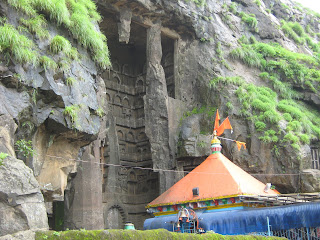
Lonavala/ Khandala are one of the favorite hill spot in Maharashtra, which attracts crowd from all over India and the most visited tourism attraction near Pune-Mumbai cities. Lonavala is situated on a height of 625 mts. above the sea level. This is also the favorite monsoon picnic spot of nearby people from Pune and Mumbai. Lonavala is popularly known as the 'Jewel of Sahyadri Mountains'. The temperature is relatively stable with little fluctuation from the norm. Temperatures usually range between 21°C and 32°C in summer, and 16°C and 21°C in winter. The Hill resort of Lonavala/ Khandala provides a great view of the blossoming green surrounds of the Sahyadri ranges. The serene environment of this town provides a great escape from the noisy city atmosphere of Mumbai city which attracts lot of tourists to Lonavala. The tourists can take a walk along the water falls, hills around Lonavala. The mountain terrains of Lonavala are ideal for trekking and mountaineering. Some of the places worth visiting around Lonavala are Bhushi Dam, Duke's Nose, Rajmachi Point, Kune Falls, Tiger's Leap, Rye-Wood Park, Tungarli Lake, Valvan dam, Ghanbirnath caves, Khandala Dari, Bhusir lake, to name a few.
Best time to visit Lonavala/Khandala: From November to February is the right time to visit for both the places. Lonavala is positioned at a height of 625 mts above sea level and Khandala lies a slightly lower around 600 mts, in the western ranges of Sahyadari Mountains.

How to reach Lonavala /Khandala: By Air: Adjacent airports are at Pune (70 kms) and Mumbai (118 kms) connected with Flights in India.
By Rail: The adjacent railway station is at Lonavala (5kms). Lonavala is situated on the major railway line amid Mumbai and Pune, all express trains that carry out between the two cities bring to a halt here. There is as well an hourly shuttle service from Pune to Lonavala.
By Road:
Lonavala/ Khandala are well associated with Mumbai and Pune. These hill stations are positioned on the Mumbai Pune Highway. Maharashtra state transport Corporation runs normal bus service every 15 minutes linking Mumbai and Pune. Buses shuttle regularly connecting Lonavala and Khandala. Travelers can take into service bicycles on hourly basis to explore Lonavala or to go to Khandala.







